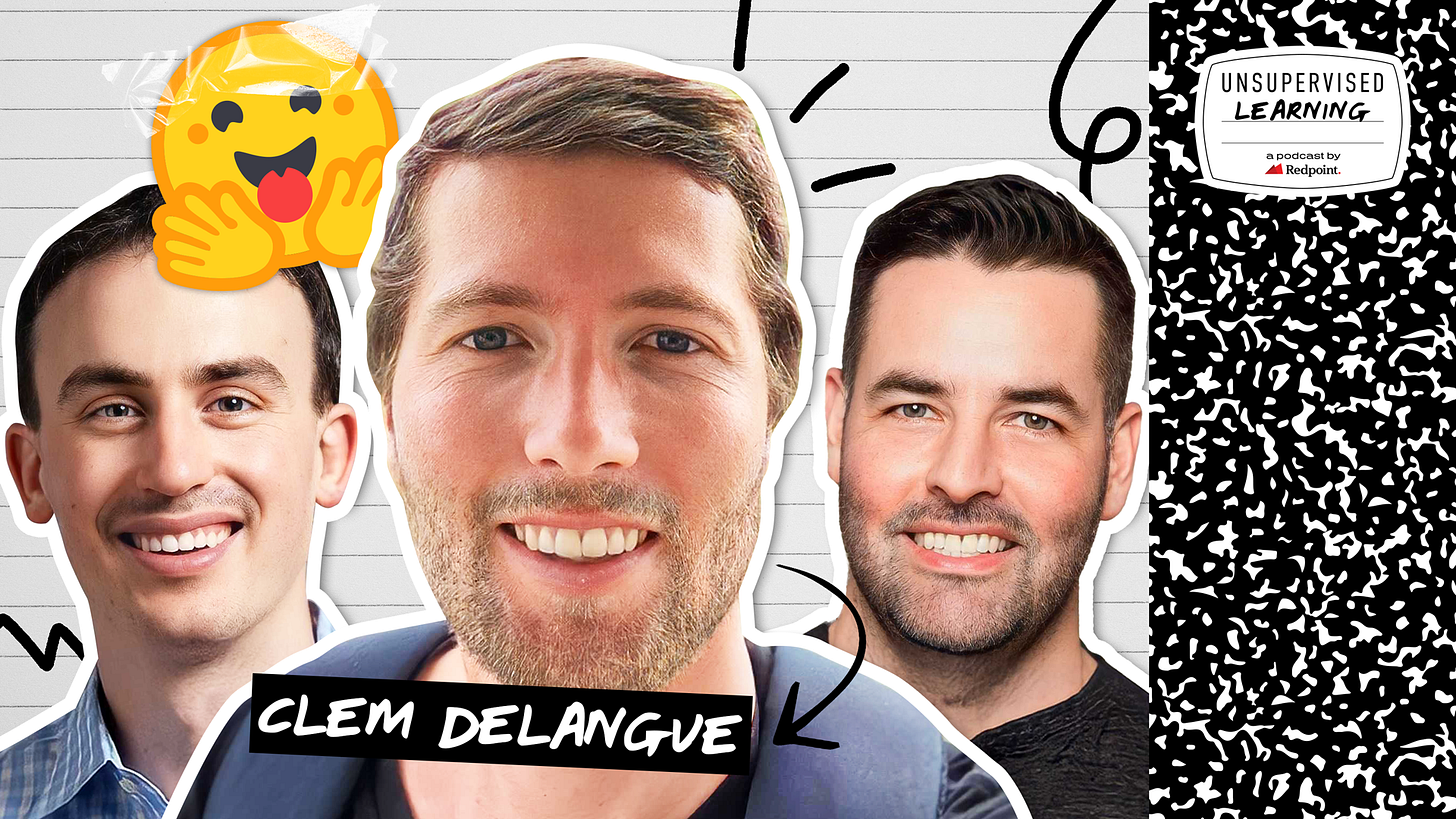The Future of Open vs Closed Source in AI: In Conversation With Hugging Face CEO Clem Delangue
On the first episode of our Unsupervised Learning podcast, we chatted with Clem Delangue, CEO and co-founder of Hugging Face.
Hugging Face is at the center of the AI community as an open source center for building, training and deploying models and was recently valued at $2B. Clem touched on Hugging Face’s origins and what it’s been like running the company since ChatGPT. We also hit on trends in who’s using the platform, the future of closed source vs open source in machine learning, why he compares large closed foundation models to Formula One Cars, how enterprise AI teams will evolve and AI safety. You can listen to our conversation on Apple and Spotify or check out highlights below. And definitely stay tuned tomorrow for our episode with Databricks CTO and co-founder Matei Zaharia.
Clem on When Open vs Closed Models Make Sense to Use
Clem on the Future of Enterprise AI Teams
“First, I think all tech teams will be AI teams in the future. As I said, because it's the new paradigm to build all tech. I'm not even sure we are going to call it AI teams or ML teams or ML engineers, but I think if you're building a technology product today, you need to do some machine learning. And one strong intuition that I have is that companies are not just going to use or outsource machine learning, they're going to build machine learning. The same way if you look at the first generation of software, you could have said, okay, there's going to be a no-code tool for people to do everything. And that's happened in some segments. You've had the Squarespaces, the Wixes, and these tools like that. But ultimately companies needed and wanted to write code themselves and actually build technology because that's the way they cater to their use case. That's the way they create a differentiation compared to others. That's the sustainable way of building technology.
For machine learning, companies who are going to create value are going to want to train models, fine tune models, optimize models, specialize models for their own use cases. And we are already seeing it. If you look, in my opinion, at the best startups out there, they're very much kind of AI native, but also AI full stack startups. I think we've got recently a new release from Runway ML, the video editing platform. When you look at what they're capable of doing by actually building AI and not just using AI through APIs, it's mind-blowing. Ultimately, I think most companies will want to build the machine learning themselves, and so most of the tech teams will end up being AI teams.
Obviously the adoption of software and the impact of software in the world has been really fast. But one limiting factor for me has been the number of software engineers. And part of the reason has been, in my opinion, because it's kind of hard to go from doing consulting or doing any other type of work to becoming a software engineer. It takes some time to master that and to become a good software engineer. But interestingly, it's much, much easier to switch and to move from being a software engineer to an AI or machine learning engineer. One interesting thing is that maybe the first generation of software actually paved the way for much, much faster adoption and progress and impact for machine learning because it's going to be much, much faster to turn all software engineers into machine learning engineers than it used to be turning any other people into software engineers.
I'm excited to see how it plays out, and see if maybe in four to five years, it's not impossible to think that you are going to have many, many more machine learning engineers or AI engineers than you have software engineers today. An interesting thing that my co-founder has been saying for quite a while, which was a bit controversial at the time, which is starting to be a bit less controversial, is that software engineering as we understand it today is actually a subset of machine learning instead of the other way around.”
Clem on The Origins of the Name Hugging Face
“When we started the company, a running joke with my co-founders was that we wanted to be the first company to go public with an emoji instead of the three-letter ticker when you go in the NASDAQ. We absolutely wanted an emoji, and then we were just using and loving so much the Hugging Face emoji that we're like, “Okay, let's go for that.” At the beginning, we thought we would keep the name maybe for a few weeks, for a few months, but then the community started to use it everywhere and to put it on social networks when we were posting things, to add it to their T-shirts or to other swag, so much so that at some point we're like, ‘Okay, there's no way we're going to change this. We need to keep it.’”



